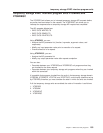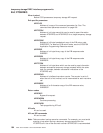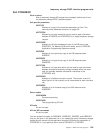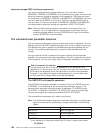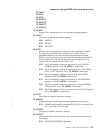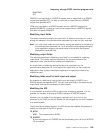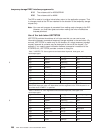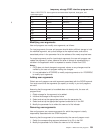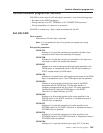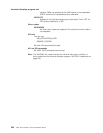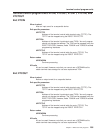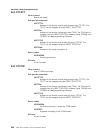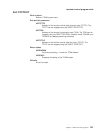
X'10' The existence bit for NOSUSPEND.
X'08' The existence bit for MAIN.
The EID is reset to its original value before return to the application program. That
is, changes made to the EID are retained for the duration of the temporary storage
request only.
Note: Your user exit program is prevented from making major changes to the EID.
However, you must take great care when making the minor modifications
that are permitted.
Use of the task token UEPTSTOK
UEPTSTOK provides the address of a 4-byte area that you can use to pass
information between successive temporary storage requests in the same task. (By
contrast, UEPTQTOK is usable only for the duration of a single temporary storage
request, because its contents may be destroyed at the end of the request.) For
example, if you need to pass information between successive invocations of the
XTSEREQ exit, UEPTSTOK provides a means of doing this.
Table 7. WRITEQ TS: User arguments and associated keywords, data types, and
input/output types
Argument Keyword Data type Input/output type
Arg1 QUEUE CHAR(8) input
Arg1 QNAME CHAR(16) input
Arg2 FROM DATA-AREA input
Arg3 LENGTH BIN(15) input
Arg4 * * *
Arg5 ITEM BIN(15) input/output
Arg5 NUMITEMS BIN(15) output
Arg6 * * *
Arg7 SYSID CHAR(4) input
Note: The different uses of Arg5 are shown, because Arg5 is used by the ITEM and
NUMITEMS keywords which are alternatives and the argument to the ITEM keyword is an
input field when REWRITE is specified.
Table 8. READQ TS: User arguments and associated keywords, data types, and
input/output types
Argument Keyword Data type Input/output type
Arg1 QUEUE CHAR(8) input
Arg1 QNAME CHAR(16) input
Arg2 SET DATA-AREA, PTR output
Arg2 INTO DATA-AREA output
Arg3 LENGTH BIN(15) input/output
Arg4 NUMITEMS BIN(15) output
Arg5 ITEM BIN(15) input
Arg6 * *
Arg7 SYSID CHAR(4) input
temporary storage EXEC interface program exits
200
CICS TS for OS/390: CICS Customization Guide
||||
||||




